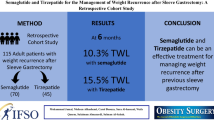Abstract
Background
Proton pump inhibitors (PPIs) are widely prescribed to treat gastrointestinal diseases. However, concerns have been raised regarding their long-term use. Gastric acid suppression may decrease iron absorption, and it remains uncertain whether iron-deficiency anemia may result from chronic PPI therapy.
Aims
We aimed to explore the association between chronic PPI use and iron-deficiency anemia.
Methods
We conducted a retrospective cohort study of adult patients in an academic outpatient setting who received PPI therapy for at least 1 year between January 1, 2004 and January 1, 2006. We compared the change in hematologic indices among patients receiving PPI therapy for at least 1 year with matched controls.
Results
Of the 98 patients on chronic PPI therapy who met inclusion criteria, 35% had no documented indication for such therapy. At baseline, demographics and hematologic indices were similar between PPI-users and controls. Among patients on PPI therapy, all hematologic indices decreased from baseline, including hemoglobin (−0.19 g/dL, P = 0.03), hematocrit (−0.63%, P = 0.02), and mean corpuscular volume (−0.49 fL, P = 0.05). PPI users had significant decreases in mean hemoglobin and hematocrit (P < 0.01 for both) compared with matched controls. After adjustment for confounders, including rates of esophagogastroduodenoscopy, colonoscopy and remote cancer status, the odds ratio of decreasing hemoglobin by 1.0 g/dL while on chronic PPI therapy was 5.03 (95% CI, 1.71–14.78, P < 0.01), while the odds ratio of decreasing hematocrit by 3% was 5.46 (95% CI, 1.67–17.85, P < 0.01).
Conclusions
Among adult patients receiving chronic PPI therapy, there is a significant decrease in hematologic indices from baseline.


Similar content being viewed by others
References
IMS Health Report. 2009 top therapeutic classes by US dispensed prescriptions. Available at: http://www.imshealth.com/deployedfiles/imshealth/Global/Content/StaticFile/Top_Line_Data/Top%20Therapy%20Classes%20by%20U.S.RXs.pdf. Accessed 9 June 2010.
IMS Health Report. 2009 top therapeutic classes by US sales. Available at: http://www.imshealth.com/deployedfiles/imshealth/Global/Content/StaticFile/Top_Line_Data/Top%20Therapy%20Classes%20by%20U.S.Sales.pdf. Accessed 9 June 2010.
Heidelbaugh J, Goldberg K, Inadomi J. Overutilization of proton pump inhibitors: A review of cost-effectiveness and risk in ppi. Am J Gastroenterol. 2009;104:S27–S32.
Pham C, Regal R, Bostwick T, Knauf K. Acid suppressive therapy use on an inpatient internal medicine service. Ann Pharmacotherapy. 2006;40:1261–1266.
Ho P, Maddox T, Wang L, et al. Risk of adverse outcomes associated with concomitant use of clopidogrel and proton pump inhibitors following acute coronary syndrome. JAMA. 2009;301:937–944.
Yang Y, Lewis J, Epstein S, Metz D. Long-term proton pump inhibitor therapy and risk of hip fracture. JAMA. 2006;296:2947–2953.
Gulmez S, Holm A, Frederiksen H, Jensen T, Pedersen C, Hallas J. Use of proton pump inhibitors and the risk of community-acquired pneumonia: A population-based case-control study. Arch Intern Med. 2007;167:950–955.
FDA drug safety communication: Possible increased risk of fractures of the hip, wrist, and spine with the use of proton pump inhibitors, 2010. Available at: http://www.fda.gov/Drugs/DrugSafety/PostmarketDrugSafetyInformationforPatientsandProviders/ucm213206.htm. Accessed May 25, 2010.
Koop H. Review article: metabolic consequences of long-term inhibition of acid secretion by omeprazole. Aliment Pharmacol Ther. 1992;6:399–406.
Marcuard S, Albernaz L, Khazanie P. Omeprazole therapy causes malabsorption of cyanocobalamin (vitamin b12). Ann Intern Med. 1994;120:211–215.
Bezwoda W, Charlton R, Bothwell T, et al. The importance of gastric hydrochloric acid in the absorption of nonheme food iron. J Clin Gastroenterol. 2000;30:29–33.
Cook J, Brown G, Valberg L. The effect of achylia gastric on iron absorption. J Clin Invest. 1964;43:1185–1191.
Hines J, Hoffbrand A, Mollin D. The hematologic complications following partial gastrectomy. Am J Med. 1967;43:555–569.
Wheldon E, Venables C, Johnston I. Late metabolic sequelae of vagotomy and gastroenterostomy. Lancet. 1970;i:437–440.
Koop H, Bachem M. Serum iron, ferritin, and vitamin b12 during prolonged omeprazole therapy. J Clin Gastroenterol. 1992;14:288–292.
Stewart C, Termanini B, Sutliff V, et al. Iron absorption in patient with zollinger-ellison syndrome treated with long-term gastric antisecretory therapy. Aliment Pharmacol Ther. 1998;12:83–98.
Hutchinson C, Geissler C, Powell J, Bomford A. Proton pump inhibitors suppress absorption of dietary non-haem iron in hereditary haemochromatosis. Gut. 2007;56:1291–1295.
Sharma V, Brannon M, Carloss E. Effect of omeprazole on oral iron replacement in patients with iron deficiency anemia. South Med J. 2004;97:887–889.
Schade S, Cohen R, Conrad M. Effect of hydrochloric acid on iron absorption. N Eng J Med. 1968;279:672–674.
Ali T, Roberts D, Tierney W. Long-term safety concerns with proton pump inhibitors. Am J Med. 2009;122:896–903.
Nealis T, Howden C. Is there a dark side to long-term proton pump inhibitor therapy? Am J Therapeutics. 2008;15:536–542.
Acknowledgments
We are grateful to Adriano Tonelli, MD for providing the inspiration for this research. We also thank Abhimanyu Beri, MD and Sahibzada Usman Latif, MD for their critical review of the manuscript.
Conflict of interest
None reported for any authors.
Author information
Authors and Affiliations
Corresponding author
Additional information
This work originated from the Department of Medicine, Michigan State University.
Rights and permissions
About this article
Cite this article
Sarzynski, E., Puttarajappa, C., Xie, Y. et al. Association Between Proton Pump Inhibitor Use and Anemia: A Retrospective Cohort Study. Dig Dis Sci 56, 2349–2353 (2011). https://doi.org/10.1007/s10620-011-1589-y
Received:
Accepted:
Published:
Issue Date:
DOI: https://doi.org/10.1007/s10620-011-1589-y




